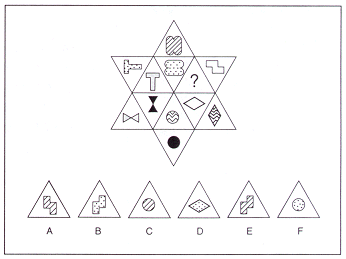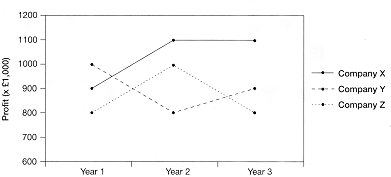The FGA contains three tests, covering verbal, numerical and abstract reasoning. Below are examples of the kind of questions you will find in the FGA. The key to successfully completing the FGA is to read the question VERY carefully.
The Verbal Test
This presents you with a passage of information followed by four questions per passage. Each question contains four statements and you have to identify the two statements that are true on the basis of the information given in the passage.
The shortage of well qualified IT staff is the main reason for the high turnover. In order to attract good staff, organisations now offer high salaries to experienced IT professionals. This encourages people to move jobs frequently in search of higher salaries and new learning opportunities. In order to retain staff, organisations are now realising the value of matching the interests and motivations of potential employees with those of the wider organisation. By doing this, they are more likely to recruit individuals with a genuine interest in the organisation who are less likely to leave sooner than expected for reasons such as seeking higher salaries.
The information technology (IT) industry has a very high turnover in personnel. Each year, many companies can expect between 15 and 20 % of employees involved with IT to move to other organisations. In some cases, this figure may be as high as 50%. This high turnover rate is very costly to companies, as it takes time and resources to train new employees in the operating procedures and systems of the organisation.
Which two of these statements must be true?
A: There is now a surplus of people with IT skills looking for work
true
false
B: Higher salaries can encourage IT professionals to move to other organisations
true
false
C: Some organisations now examine the motivations of prospective IT employees
true
false
D: The IT industry has the highest turnover of personnel in any industry
true
false
The correct answer options are B and C, as both of these are stated in the passage. The passage indicates that there is a shortage of people with good IT skills, so statement A is incorrect and as no information relevant to statement D is provided, the truth of this statement is unknown.
The Numerical Test
This presents you with a stem of information followed by four questions. The stem can present information in a variety of ways, for example, table, graph, bar chart, text. You have to use the information from the stem, plus any additional information the question gives you, to identify which one of the six answer options is correct. An example of an information stem follwed by a question is given below.
|
The following graph shows the profit made by three companies over three years.
| |
| Over the three years, what was the mean (average) difference in profits between Company X and Company Y | |
| A: £100,000 | |
| B: £150,000 | |
| C: £200,000 | |
| D: £150,000 | |
| E: £300,000 | |
| F: £350,000 | |
The correct answer is C (200,000). The difference between the profits of companies X and Y is £100,000 in year one, £300,000 in year two and £200,000 in year 3. To find the mean difference you need to sum these differences (£600,000) and then divide by the number of years (3).
This consists of a series of shapes on a grid. One of the shapes from each grid is missing, as indicated by a question mark. The organisation of shapes within each grid is governed by a fixed rule, and you have to identify the rule from the shapes provided and then select which of the six answer options best fits in place of the missing item.
The correct answer to this question is E. Going from left to right, the arrow rotates 90 degrees anticlockwise through each cell. The triangle moves around the corner of the cells clockwise, and its colour alternates between black and white. Prepare yourself by having a good night's sleep and arriving well in time. If you normally wear glasses or a hearing aid, remember to bring them with you. For further practice questions and valuable advice from the people who write the actual tests, get yourself a copy of ...The Abstract Test

